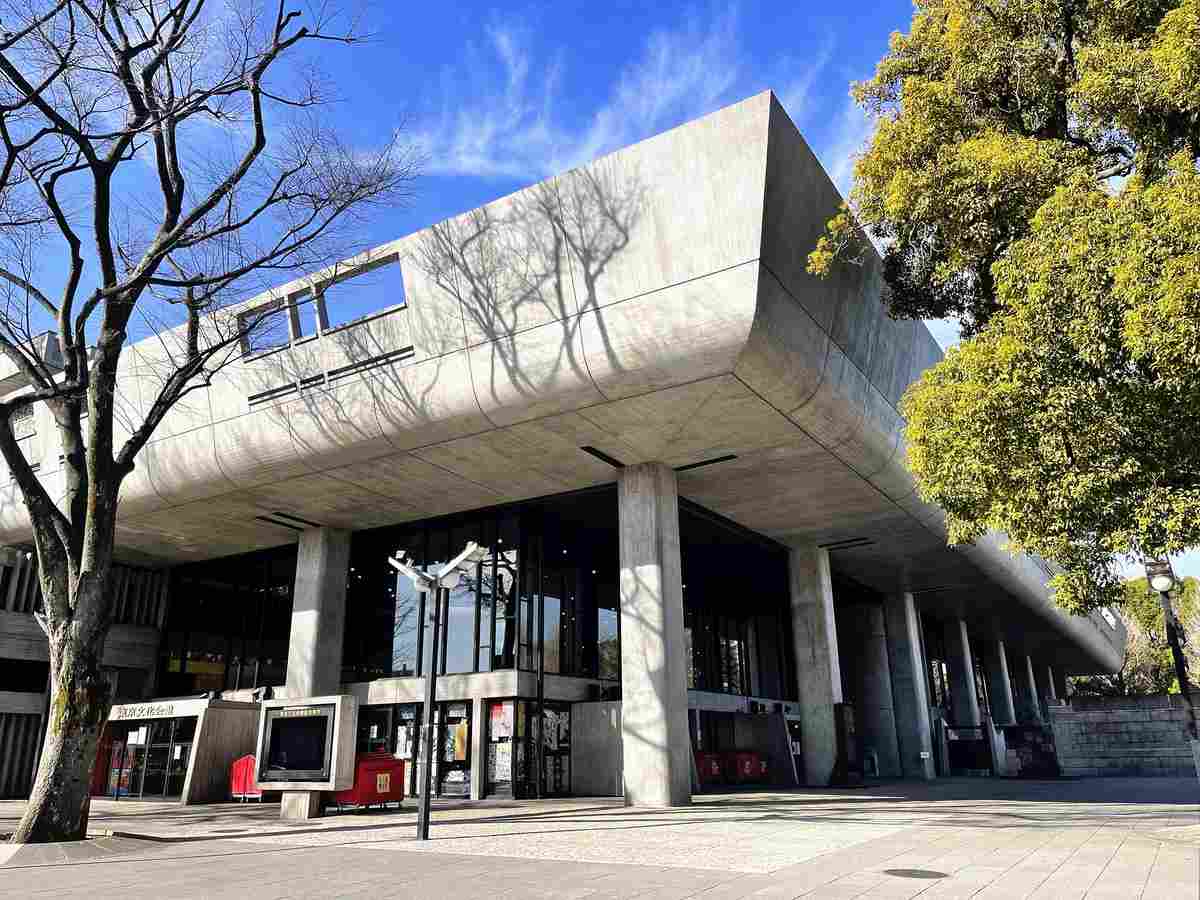Shortage of Large Halls, Theaters Threatens Future of Ballet, Opera in Japan; Tokyo Bunka Kaikan Hall to Close for Major Renovation

Tokyo Bunka Kaikan in Taito Ward, Tokyo, which has announced its plan to temporarily close
16:01 JST, December 9, 2024
A shortage of halls and theaters large enough to stage full-scale opera and ballet performances is occurring in the Tokyo metropolitan area. In late September, Tokyo Bunka Kaikan hall in Taito Ward, Tokyo, announced that the famed venue for classical music and ballet will close from May 2026 to mid-fiscal 2028 for a major renovation.
The theater complex with two auditoriums, one large and the one small, opened in 1961. The main hall has a big stage and a spacious backstage area plus a seating capacity of 2,303. It is an ideal venue for ballet or opera performances that require large sets.
A seating capacity of 2,000 or more is an important condition for promoters bringing popular foreign companies to Japan. Since such performances cost a lot to stage, they need to sell a large number of tickets if they are to keep the ticket price as low as possible.
The problem is that it is likely to be difficult to find substitute halls of similar size, such as Kanagawa Kenmin Hall in Yokohama, which seats up to 2,493, and the Orchard Hall in Shibuya Ward, Tokyo, which seats 2,150, as the former will be closed from April next year for an unknown period of time due to decrepitude, and the latter will not be in full operation until mid-fiscal 2027 due to renovation of an adjacent facility.
In addition, a major refurbishment is planned for the cultural complex that houses Orchard Hall.
Then what will happen to the World Ballet Festival and tours of Japan by Britain’s Royal Ballet and other world-renowned companies, which have been taking place at Tokyo Bunka Kaikan? If these performances are to take place at a venue with a completely different size and with different conditions for use, it would be unclear if the shows can retain the same quality, with the same admission fees and for the same period of time.
Meanwhile, private ballet companies in the Tokyo metropolitan area are finding it hard to secure venues for their performances. Shinjuku Bunka Center, Fuchu no Mori Art Theater and the Kawaguchi Lilia hall, which have large venues ideal for ballet, have been temporarily closed for renovation.
The same problem surfaced in 2015. In September of that year, U-Port Hall in Gotanda, Tokyo, shut down. Since other large facilities, such as the Yokohama Arena, were scheduled to go under renovation from the following year, representatives of musicians, traditional performing arts groups and ballet companies held a joint press conference and appealed to the public to consider it a nationwide issue.
However, the appeal came to nothing, and the situation further deteriorated with the closure of Mielparque Hall in Minato Ward, Tokyo.
This time, the Association of Japanese Ballet Companies has issued a statement, which read, “Without theaters, the decline of our performing activities is inevitable.” The statement then listed the association’s requests as follows:
• Shortening of Tokyo Bunka Kaikan’s closure period.
• Making arrangements between theaters and halls so their renovations are not done at the same time.
• Construction of new theaters suited for stage opera and ballet productions.
The association plans to present the statement and appeal to the authorities in various sectors.
The performing arts are evolving day by day. Tours by major foreign companies offer Japanese audience members precious opportunities to savor the world’s finest works of artistic expressions. If they stop coming for nearly three years, ballet and opera in Japan may fall behind the global trends in those genres.
The three requests by the ballet association should be seriously considered and implemented this time.
"Culture" POPULAR ARTICLE
-

Dior, Gucci Adapt Kyoto’s Traditional Textiles for Modern Tastes
-

Event Held at Kyoto State Guest House to Showcase Beauty of Traditional Japan, Includes Crafts, Cuisine, Performances
-

Van Cleef & Arpels Dazzles with Art Deco Artisanry at Tokyo Exhibit
-

Ainu Thanksgiving Festival to Be Held in Tokyo with Performances from Ainu, Other Indigenous Groups
-

Disney’s ‘Twisted-Wonderland’ Animated Series Puts Villains in Spotlight: New Show Features School Inspired by Classic Disney Films
JN ACCESS RANKING
-

Govt Plans to Urge Municipalities to Help Residents Cope with Rising Prices
-

Japan Resumes Scallop Exports to China
-

Japan Prime Minister Takaichi Vows to Have Country Exit Deflation, Closely Monitor Economic Indicators
-

Japan to Charge Foreigners More for Residence Permits, Looking to Align with Western Countries
-

JR East Suica’s Penguin to Retire at End of FY2026; Baton to be Passed to New Character






















